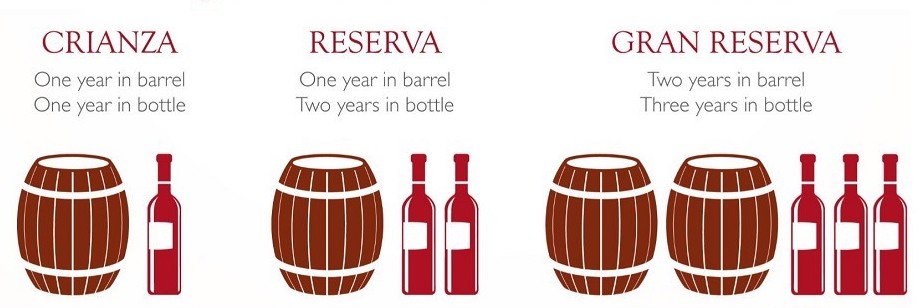Rioja
Over the past 50 years, this wine has been catching up and has gained a lot of fans. We think this is only right, and we thought it was time for a short blog about the Rioja.
Region
In the north of Spain, under Navarra, flows the Ebro River. On the banks of this river lies the Rioja wine region. This area is approximately 120km long and 40km wide.
The wine does not owe its name to the province of Rioja, but to a tributary of the Ebro, the Rio Oja.
The region can be divided into 3 sub-regions:
- The Rioja Alta
This region lies to the west of Logroño and has the largest cultivated wine surface. The soil is slightly heavier and produces a fruity, powerful, dark Rioja.

- The Rioja Baja
This region is the most extensive and the vineyards are situated in a low valley. The soil consists mainly of silt soil from the river. Generally, somewhat simpler wines are produced here, but there are of course always exceptions.

- The Rioja Alavesa
West of Logroño, in the Basque area, we find the Rioja Alavesa region. This is also the smallest region of the three, but it is known for fine, tasty wines.

In this mountainous region, the vines get enough rain. There is also a long spring and autumn period, which ensures the wine is less heavy.

Aging to perfection
The whole process of aging Rioja wine is very strict and is the result of constant love for the product and its development.

Below is an overview of the various aging periods:
“Joven”
Joven is the name for a young wine, which is put on the market one year after the harvest. This wine does not have to age on wood, but a rioja is often put in wooden casks for a short time (0-6 months), then bottled and left to age.
“Crianza”
A distinction is made between the process for white and rosé wine on the one hand and red wine on the other.
The white and rosé wine is brought onto the market after one year, so it remains a young wine. The big difference with a white and rosé Crianza as compared to a Joven is that a Crianza has been aged in wooden barrels for at least 6 months.
The red wine has a longer ripening time, so it is only put on the market 2 years after harvesting the grapes. During the aging process, the wine will be stored in wooden barrels for at least 1 year. Then the wine is bottled and kept for another year in the bottle.
“Reserva”
A red Reserva is only offered for sale after 3 years. The wine is first put in wooden barrels for 1 year and then matured for 2 years in the bottle. This process can also be reversed. (ie 2 years in the barrel and 1 year in the bottle).
A white or rosé Reserva can be sold after 2 years of aging and will mature for 6 months in barrels during this time.
“Gran Reserva”
These are the top wines because this name is reserved only for wines of an exceptional vintage year.
A white or rosé Gran Reserva has a total maturation period of 4 years, of which 6 months in the barrel. These wines are very rare!
The red wines have a process of 5 years. First 2 years of aging in wooden barrels and then 3 years of maturing in the bottle.
Many bodegas produce different combinations per type because they often use their own guidelines for the development of a Crianza, Reserva or Gran Reserva.

Various grape varieties | Rioja
There are obviously bodegas that only work with their own vineyard. But most of them do not grow enough grapes and have to buy them in. Sometimes they even buy wine from which they make their own cuvées.
When the wine is created from grapes from one area, the subzone is often listed on the label (e.g.: Rioja Alta).
The “Viura” is the main grape used for white Rioja. But also, the “Malvasia” and white “Garnacha” grape are used.

Nowadays, most of white Rioja’s are very fresh and made in a simple way. However, several bodegas continue to use the classic, oxidative technique, resulting in a full and rich taste.
A red Rioja is almost always a combination of different varieties of grapes from different areas. See the overview below:
– Tempranillo: without a doubt, the most important grape. It is harvested between mid and late September. Tempranillo means early, so it is logical that this grape ripens quickly too.
– Viura: especially the classic bodegas use this white grape in the composition
– Garnacha: is grown mainly in the Rioja Baja but is very important for all Rioja’s. This grape has a longer (+/- 2 weeks) ripening time.
– Mazuelo
– Graciano





